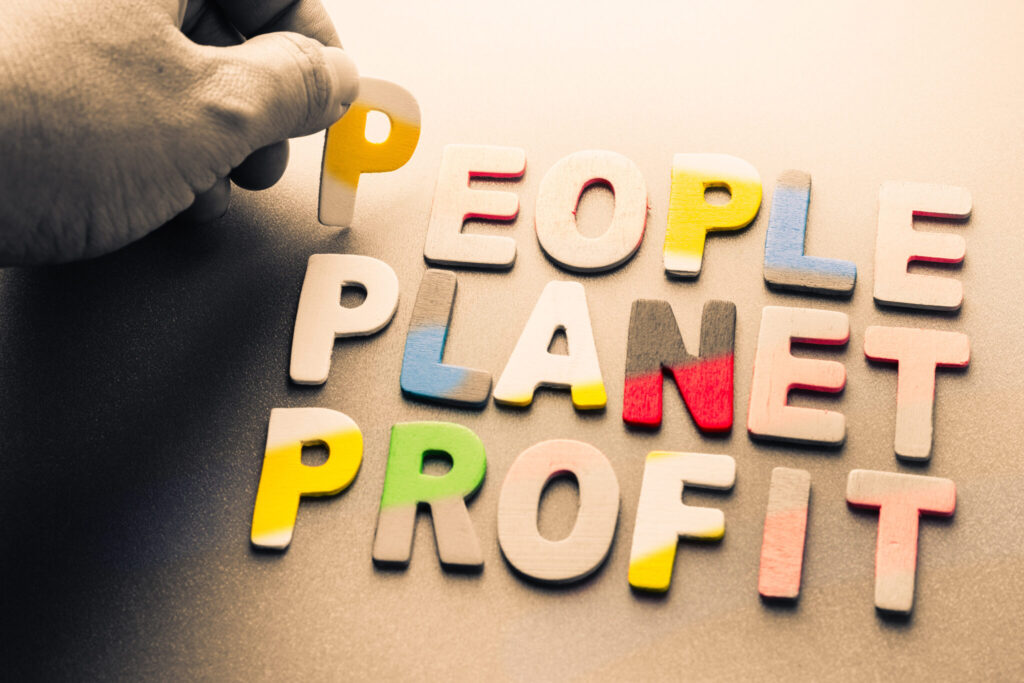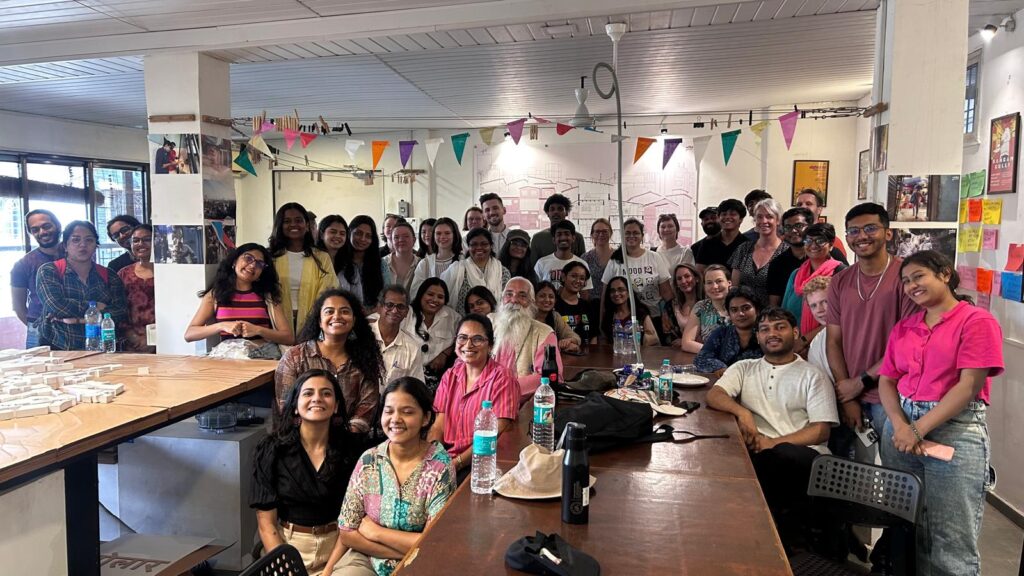Finding sustainable and scalable solutions to global challenges such as poverty, inequality, and climate change is increasingly urgent. One contemporary approach involves developing impact entrepreneurship and business models that focus not only on economic profit, as in traditional entrepreneurship, but also on addressing societal challenges. Impact entrepreneurship refers to business activities aimed at generating social or environmental good through commercial means. These businesses operate by considering the ”triple bottom line”: People, Planet, and Profit.
 Photo by patpitchaya / Adobe Stock (Laurea education-licence)
Photo by patpitchaya / Adobe Stock (Laurea education-licence)
In Laurea University of Applied Sciences’ Future-Oriented Project Management program, students can explore impact entrepreneurship through the Co-Life project’s Impact Focused Entrepreneurship (IFE) course. The course was attended by three students—Tiina Mustonen, Matilda Pontán, and Katja Lajunen—along with instructors Tiina Lehtosaari and Salla Kuuluvainen. The nine-week course began with a week-long trip to Goa in January, continued with remote learning, and concluded in vibrant Mumbai in March 2025.
Collaboration with Local Companies
A key part of the IFE course was working with local business partners. The project focused on real-world development tasks provided by companies, applying the knowledge and skills gained during the modules. These modules addressed the social, cultural, economic, and legislative dimensions of sustainable business, including corporate social responsibility (CSR, ESG), the United Nations’ Sustainable Development Goals (SDGs), and circular economy principles. Students also studied the regulatory and contextual specificities of operating in India.
Partner companies included the waste management facility Saahas Zero Waste, water quality monitoring startup SaafWater, rainwater harvesting system provider Lila Digital, and waste sorting center YIMBY. During the local week in Goa, student project groups visited these companies to kick off their collaboration. The partner organizations represented different approaches to impact, providing a broad perspective on the opportunities and challenges in IFE entrepreneurship.
SaafWater is a young, award-winning startup in its acceleration phase. It seeks societal impact by improving access to clean water in a country where about 400,000 people die annually from diseases caused by contaminated water. These diseases also impose an estimated economic burden of USD 600 million annually in India (UNICEF, 2025). The student team developed an impact measurement framework to help the company build trust and credibility for its innovative real-time monitoring system. This framework was also used to increase brand awareness and position SaafWater as a vital solution provider.
Saahas Zero Waste focuses its impact on promoting the circular economy through smarter product design, longer product life cycles, sorting, and recycling—all aimed at minimizing waste and promoting sustainable resource use. This is crucial in Goa, where 766 tons of dry waste are generated daily and 26,086 tons of plastic annually. The tourism, hospitality, and construction sectors are the largest contributors to the waste problem. While Goa has a population of 1.5 million, the temporary tourist influx exceeds 8 million (Kumar & Gupta, 2018).
Tools and Insights for Developing Impact Entrepreneurship
Company collaboration and site visits significantly supported learning. Students applied processes and tools from design thinking and service design to solve the development tasks. They analyzed business environments, stakeholders, business models, and revenue logic from an IFE perspective. Project and coursework included tools such as the Business Model Canvas to map customer segments and value propositions, and the Value Proposition Canvas to deepen customer insights. Additional tools included PESTEL analysis, SWOT, and the Balanced Scorecard (BSC). Using these tools helped students apply theoretical knowledge in practice and understand the broader landscape of impactful business.
IFE companies assess not only financial viability but also their societal and environmental impact. For example, Saahas Zero Waste considers social responsibility by formalizing informal labor—employing waste pickers and paying them at least a minimum wage. CEO Wilma Rodrigues explained that without legal status, waste pickers are vulnerable to health hazards and economic exploitation, earning as little as ₹100 per day (approx. €1) (Saahas Zero Waste), (SaafWater)
Urbz – Social Impact in Mumbai
In Mumbai, the group had the opportunity to visit the architecture firm Urbz, located in the densely populated neighborhood of Dharavi. Urbz is a unique example of impact entrepreneurship through its community-driven urban planning. Founded in 2008, Urbz collaborates closely with residents to co-develop living environments. Today, it is an international collective with projects also in Paris, Geneva, and Bogotá (urbz.net).

Image 1: Students visiting the Urbz architecture and urban development office. Photo: Sanskriti Shukla
Dharavi spans about 2.4 square kilometers and is a self-built economic and social community home to an estimated one million people. Visiting this “home-grown community” was an eye-opening experience: while living conditions are tight and modest, the area is vibrant, entrepreneurial, and full of everyday innovations. Dharavi’s “tool house” model—where living and working occur in the same space—is an original ”work-from-home” solution, showcasing how people create functional systems under limited resources. Urbz exemplifies bottom-up development rooted in residents’ needs and ideas. The visit reminded students of the importance of approaching communities with open minds and without prejudice—only then can we truly understand what impact means at the local level.

Image 2: Students exploring development sites in Dharavi, Mumbai with Urbz. Photo: Matilda Pontán
Cultural Insights from the Journey
During their studies in India, students visited places and companies typically inaccessible to regular tourists. Unlike self-organized travel, where one controls schedules, interactions, and activities, this structured program provided a unique and inspiring experience. Cultural and human engagement went deeper, as discussions with teammates and locals enriched their understanding of the context.
Tips for Future Participants
The Co-Life project continues until 2026. Future courses will include visits to Jaipur and Delhi in collaboration with the Indian School of Development Management (New Delhi) and the Art School of Design and Business (Jaipur, Rajasthan).
For those planning to attend, we recommend purchasing an eSIM card. It makes using Uber easy and enables convenient travel and navigation. Uber rides are surprisingly cheap compared to Finland—10–20 minute (3–4 km) rides cost about ₹150 (€1.50). Although you can pay through the Uber app, it’s wise to carry cash for dinners and souvenirs. A classmate summarized the local cost of living well: with a monthly income of ₹150,000 (~€1,500), one can live comfortably in a good neighborhood with access to clean water.
Stay hydrated by drinking regularly. Electrolyte tablets in your water bottle can help, and if dizziness hits, a soda can quickly restore your sugar levels. A soda costs around ₹100 (~€1)—the equivalent of a local waste picker’s daily wage, yet just spare change to us. Finding safe restaurants can be a gamble, so local students’ tips are invaluable—they know which places are safe even for Western stomachs. You’ll get to enjoy amazing vegetarian dishes from all over India.
When it comes to clothing, opt for loose fits, light colors, linen, long skirts, and pants, as the heat and sun can be harsh on the skin. Temples require modest clothing—no short skirts or bare shoulders. Long pants or skirts and a loose shirt work well, even in air-conditioned indoor spaces.
You’ll learn and see the most when you step out of your comfort zone. We highly recommend joining this course to explore the timely topic of impact entrepreneurship in a unique setting and embark on an unforgettable journey.
Sources
The first image in this article (the feature image) is not licensed under CC BY-SA. It has been used in accordance with the terms of the Adobe Stock Education License and may not be reused or redistributed without separate permission.